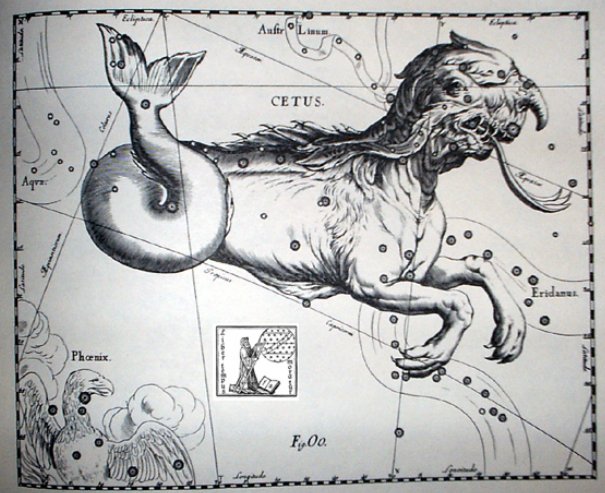September 29 is precisely a quarter of a year later than June 30 (when in rongrongo times Sirius rose heliacally) and on the other side of the sky March 31 is Gregorian day 272 (September 29) - 182 = 90. If we should count not from January 1 but from December 31, then March 31 will be day 91 and from there another 91 days will measure the distance to June 30. And from there yet another 91 days to September 29. 4 * 91 days = 4 * 13 weeks = a year with 364 days (= 52 weeks). Naturally December 31 would become the 'one more' day.
Inside (ki roto ki) the perfect oval there are 2 signs, at the top a kai person and below an arrangement with a pair of henua forming a kind of apex:
We could say the pair of henua are forming a wedgemark in order to underline how September 29 is the date when one half of the year is joined to the next half. The year is like a pair of 'shells', yet to be counted as a unity. Just like the wedgemarks in the tresses of Pachamama. I suggest the bottom 'apex' is also expressing the idea of a 'broken stick', presumably referring to the old ruler's staff. His power to rule is broken at the same time as his staff. ... Man is demi-god: he always has either one foot or the other in the grave; woman is divine because she can keep both her feet always in the same place, whether in the sky, in the underworld, or on this earth. Man envies her and tells himself lies about his own completeness, and thereby makes himself miserable; because if he is divine she is not even a demi-goddess - she is a mere nymph and his love for her turns to scorn or hate. Woman worships the male infant, not the grown man: it is evidence of her deity, of man's dependence on her for life. She is passionately interested in grown men, however, because the love-hate that Osiris and Set feel for each other on her account is a tribute to her divinity. She tries to satisfy both, but can only do so by alternate murder, and man tries to regard this as evidence of her fundamental falsity, not of his own irreconsolable demands on her ... In Manuscript E the dream-soul of Hau Maka reached a place (in time-space) which she named Hatinga Te Kohe and this means 'the place of the broken staff' (of bamboo, kohe). ... The dream soul went on. She was careless (?) and broke the kohe plant with her feet. She named the place 'Hatinga Te Koe A Hau Maka O Hiva'. The dream soul went on and came to Roto Ire Are. She gave the name 'Roto Ire Are A Hau Maka O Hiva' ...
This place could be September 29, and as a further argument we should notice that the name of the following station is Roto Ire Are. The word roto implies being inside while the associations of iri are points at plants on the surface of the sea (remember the 6th Rain God station) - i.e. sea weeds which possibly are to be drawn up, 'excavated' (are):
| |||||||||||||||||||||||||||||||||||||||||||||||||||||||||||||||||||||||||||||||||||||||||||||||||||||







